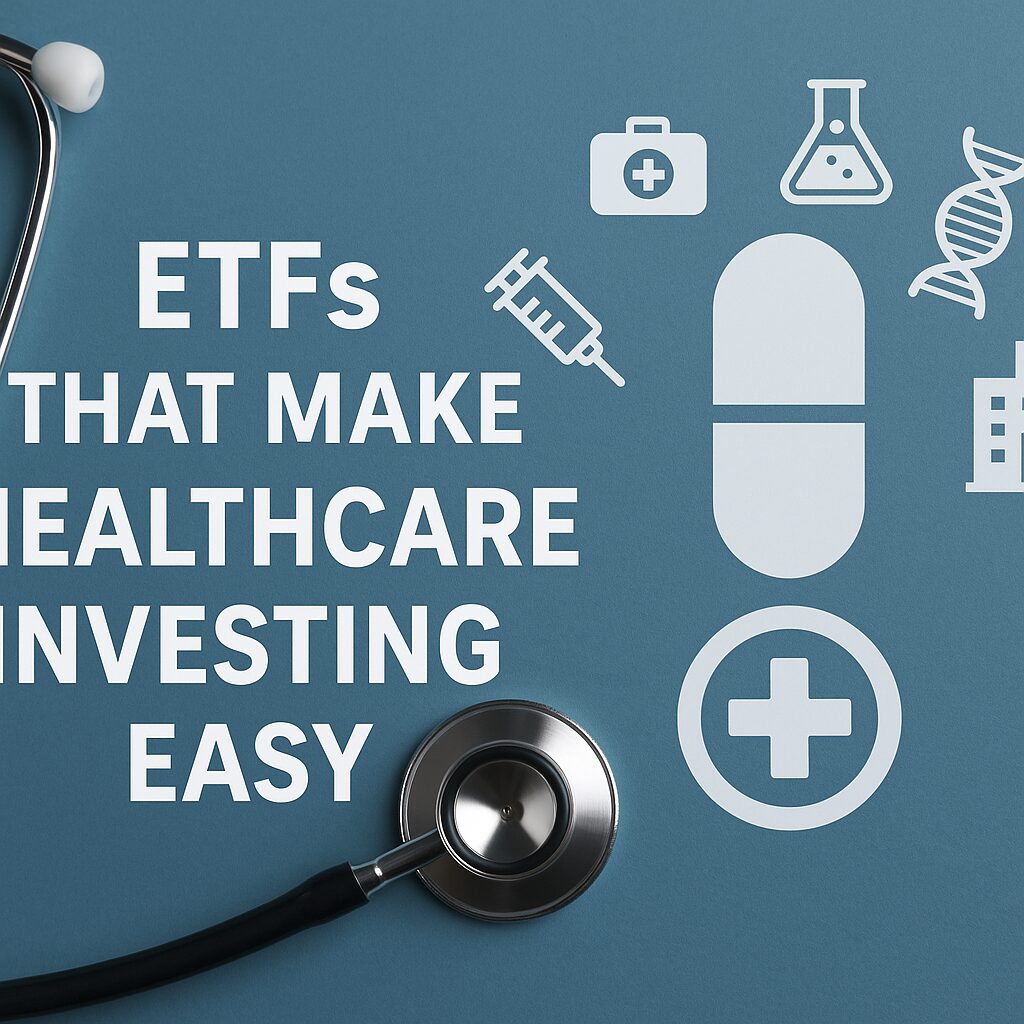
Build Wealth in One of the World’s Most Reliable Sectors—Without Picking Individual Stocks
Healthcare is one of the most essential, resilient sectors in the stock market. People need medical care in good times and bad, which makes healthcare companies a dependable choice for long-term investors—especially retirees and those seeking lower volatility.
But here’s the challenge: the healthcare industry is huge and complex. It includes hospitals, biotech firms, pharmaceutical giants, insurers, and medical device manufacturers. Picking the right healthcare stocks can feel overwhelming—even risky—if you don’t have time to research the details.
That’s where healthcare-focused ETFs come in.
ETFs, or exchange-traded funds, make it easy to invest in the healthcare sector without needing to be a stock-picking expert. In one trade, you can own dozens—or even hundreds—of companies, giving you instant diversification, lower risk, and hands-free management.
Let’s explore why healthcare ETFs make so much sense for the average investor and highlight some of the best ones to consider.
Why Invest in Healthcare?
Before diving into ETFs, it’s important to understand why healthcare is a favorite among long-term investors:
✅ Defensive Sector: Healthcare tends to hold up well in economic downturns. People don’t stop going to the doctor or filling prescriptions just because the economy slows down.
✅ Aging Population: The U.S. and global population is aging. Seniors use more healthcare services, medications, and insurance, fueling growth across the sector.
✅ Innovation & Growth: From cutting-edge biotech to wearable medical devices and AI diagnostics, healthcare continues to evolve and expand.
✅ Strong Dividend Payers: Many healthcare companies offer stable, growing dividends—a key feature for income investors.
Why Use Healthcare ETFs Instead of Picking Stocks?
While individual healthcare stocks can deliver big returns, they also come with risks. A new drug may fail testing, a lawsuit may hit an insurer, or regulations may change.
Healthcare ETFs let you spread out those risks while still participating in the sector’s growth.
Here’s why healthcare ETFs are so beginner-friendly:
- Diversification: Own dozens of companies in one investment
- Professional management: The ETF provider handles rebalancing and stock selection
- Liquidity: Buy and sell easily like any stock
- Low fees: Many ETFs have expense ratios under 0.10%
- No guesswork: No need to follow earnings, approvals, or industry shifts closely
Top Healthcare ETFs to Simplify Your Portfolio
Here are some of the most popular and respected healthcare ETFs, each offering something a little different:
🩺 1. XLV – Health Care Select Sector SPDR Fund
- What it does: Tracks large-cap U.S. healthcare companies
- Top holdings: Johnson & Johnson, UnitedHealth, Pfizer, Merck
- Why it’s great:
- Low expense ratio (~0.10%)
- Focused on major, stable players
- Excellent core holding for conservative investors
XLV is perfect if you want blue-chip exposure to the biggest names in the healthcare sector.
🧬 2. VHT – Vanguard Health Care ETF
- What it does: Covers the entire U.S. healthcare market
- Top holdings: Includes large, mid, and small-cap stocks
- Why it’s great:
- Over 400 holdings for broad diversification
- Extremely low fees (~0.10%)
- Strong long-term performance
VHT is ideal for investors who want full-sector exposure in a single, low-cost ETF.
💉 3. IHI – iShares U.S. Medical Devices ETF
- What it does: Focuses on medical device manufacturers
- Top holdings: Abbott Labs, Medtronic, Boston Scientific
- Why it’s great:
- Niche exposure to a fast-growing sub-sector
- Less impacted by drug pricing regulations
- Great way to play the innovation trend
If you believe in the future of minimally invasive surgery, remote monitoring, and digital health, IHI is a compelling choice.
🧪 4. XBI – SPDR S&P Biotech ETF
- What it does: Targets U.S. biotechnology companies
- Top holdings: Equal-weighted across many smaller biotech firms
- Why it’s great:
- Potential for explosive growth
- Diversifies away from mega-cap biotech
- Higher risk, higher reward
XBI isn’t for the faint of heart—but it’s a strong growth play if you can stomach volatility.
💼 5. RYH – Invesco S&P 500 Equal Weight Health Care ETF
- What it does: Gives equal weight to all healthcare stocks in the S&P 500
- Why it’s great:
- Avoids overexposure to mega-caps
- Helps smaller companies shine
- Smooths performance over time
RYH is a great option if you want broad exposure without letting just a few big names dominate your portfolio.
How to Use Healthcare ETFs in Your Portfolio
If you’re retired or nearing retirement, a common approach is to:
- Make XLV or VHT your core healthcare holding for stability
- Add a smaller position in IHI or XBI for growth
- Hold 10–20% of your overall portfolio in healthcare for diversification and resilience
You can also blend ETFs with dividend-focused funds, REITs, or bond ladders for income and balance.
Final Thoughts: Keep It Simple, Keep It Healthy
Investing in the healthcare sector doesn’t have to be intimidating. ETFs make it easy to access the reliability and growth potential of healthcare without picking individual stocks or becoming an industry expert.
With the right healthcare ETF (or a few), you can:
- Capture the benefits of an aging population
- Enjoy steady dividends and capital growth
- Sleep better at night knowing you’re diversified
No lab coat required.
This post is based on material from my book: Your Healthy Portfolio: Building Wealth With Low-Risk Healthcare ETFs, available now at Amazon.com in paperback and eBook formats. Inside, you’ll find simple explanations and actionable guidance to help you build a strong, low-risk retirement portfolio using healthcare ETFs.
Disclaimer: This blog post is for informational and educational purposes only. It does not constitute investment, financial, or medical advice. All investments carry risk, including the risk of loss. Consult a qualified financial advisor before making any investment decisions related to ETFs or the healthcare sector.